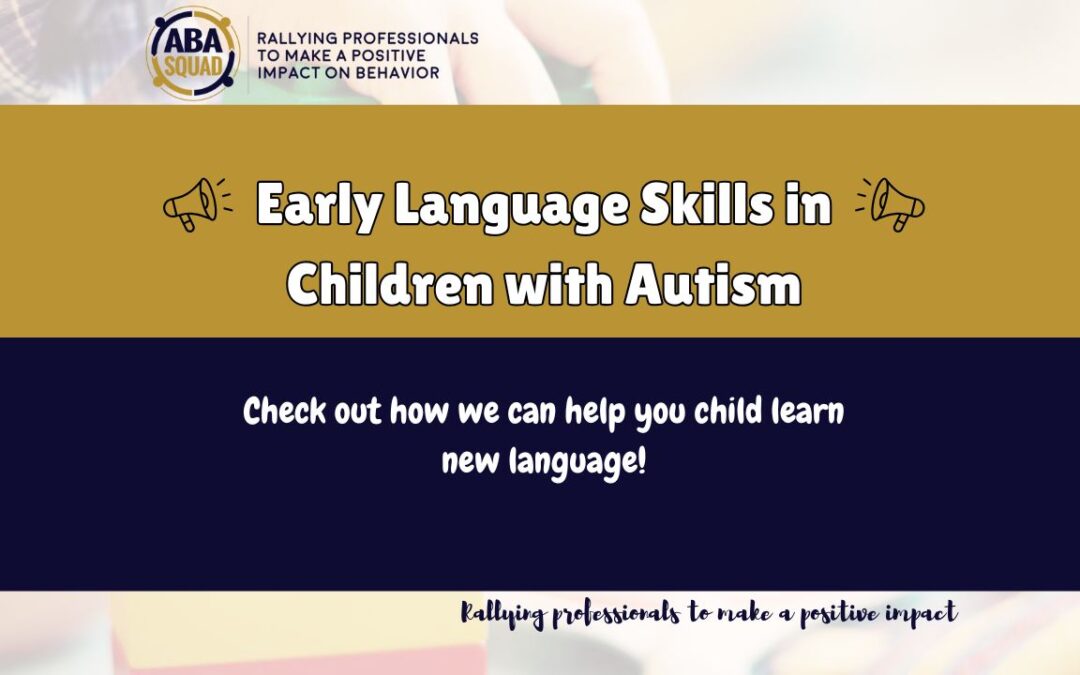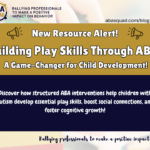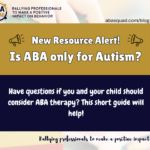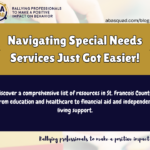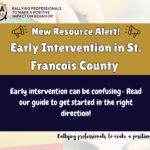How to Develop Language Skills in Autism
Developing language skills in children with autism spectrum disorder (ASD) significantly enhances communication, paving the way for stronger relationships and greater independence. As a local behavior analyst in St. Francois, we often work with young learners who need language support. It is essential to have the tools to help that child learn those skills.
Children with autism often face challenges such as limited expressive language or difficulty understanding social cues/social skills. However, with the right strategies and support, these barriers can be overcome. Let’s explore effective techniques to support language development in children with autism.
Creating a Supportive Learning Environment
Children with autism benefit from predictable, calm, and engaging environments designed to foster language-rich development, which encourages both verbal communication and the use of visual supports. This involves reducing sensory distractions and organizing spaces to promote communication. For example, creating designated areas for communication-based activities can help children focus and use language more effectively.
Incorporating a child’s interests can also encourage interaction. If a child is fascinated by trains, you might use train-related toys and vocabulary to prompt communication, helping them acquire new words through meaningful experiences.
Using Visual Supports
Visual supports help children with autism better understand and express themselves. Many children on the spectrum are visual learners, making tools like pictures, visual aids, and symbols highly effective for language acquisition.
Picture Exchange Communication System (PECS)
The Picture Exchange Communication System (PECS) is a structured approach that uses pictures to help nonverbal children or those with limited verbal communication express their needs and desires. PECS enables children to initiate communication by exchanging a picture for a desired item, reinforcing the concept of purposeful communication.
Visual Schedules
Visual schedules provide a clear, step-by-step outline of daily activities. This helps children understand what to expect, reducing anxiety and supporting transitions between tasks. Visual schedules can be used to prompt language as children label each activity or ask questions about upcoming events.
Implementing Speech Therapy
Speech therapy is often a cornerstone of language intervention for children with autism. Speech-language pathologists (SLPs) assess a child’s specific communication needs and implement tailored strategies to support their language development.
Role of Speech-Language Pathologists
SLPs play a crucial role in helping children develop both verbal and nonverbal communication skills. They work on improving articulation, language comprehension, and social communication skills such as taking turns, maintaining eye contact, and recognizing social cues.
Techniques Used in Speech Therapy
Common techniques include modeling language, prompting responses, and using speech-generating devices for children with severe language delays. Through consistent therapy sessions, children can make gradual progress in their ability to use language effectively.
Encouraging Social Interaction
Social interaction creates natural opportunities for children to develop conversation skills through interactions with peers, caregivers, and educators.
Structured Play Dates
Organized play dates with typically developing children create opportunities for practicing language in a social setting. Structured activities, such as games or storytelling, encourage children to use language to negotiate, take turns, and express their thoughts.
Social Stories
Social stories describe specific social situations and appropriate behaviors, helping children understand expectations and improve their social communication skills. These stories can prepare children for activities like visiting a friend or attending a birthday party, reducing communication challenges.
Utilizing Technology and Apps
Technology can be a powerful tool for language development and social communication, offering ways to enhance both expressive and receptive language skills. Interactive apps and devices offer visual, auditory, and interactive learning opportunities.
Communication Apps
Communication apps, such as Proloquo2Go or Speech Blubs, provide alternative communication options for nonverbal autistic children. These apps use symbols, pictures, and speech output to help children express themselves.
Online Learning Tools
Online tools can offer engaging activities to practice language skills. Games that involve identifying objects, forming sentences, or interpreting facial expressions support both expressive and receptive language development.
Incorporating Applied Behavior Analysis (ABA)
Applied Behavior Analysis (ABA) is a well-established intervention for supporting language development in children with autism.
Principles of ABA
ABA uses positive reinforcement to encourage desired behaviors, including communication. For example, when a child uses a single word to request an item, they receive immediate reinforcement, strengthening the behavior.
Language-Focused ABA Techniques
ABA techniques such as discrete trial training (DTT) break language learning into manageable steps. Therapists teach specific skills—like naming objects or using gestures—through repetition and reinforcement, gradually building more complex language abilities.
Engaging in Parent-Child Interaction Therapy (PCIT)
Parents play a critical role in their child’s language development. Parent-Child Interaction Therapy (PCIT) provides techniques to enhance communication during everyday interactions.
Techniques for Enhancing Communication
Parents learn strategies to model language, encourage eye contact, and expand on their child’s speech. For example, if a child says “ball,” a parent might respond, “Yes, it’s a red ball! Let’s roll it!”
Building Stronger Parent-Child Bonds
Positive parent-child interactions foster trust and motivate communication through activities like reading books or engaging in pretend play.
Teaching Through Everyday Activities
Language learning doesn’t have to be limited to structured therapy sessions. Everyday routines provide valuable opportunities to practice communication.
Language Development During Daily Routines
Activities such as mealtime, bath time, and grocery shopping can be used to introduce new words and encourage conversation. For instance, during mealtime, parents can name foods, describe actions (e.g., “We’re pouring juice”), and ask questions to prompt responses.
Encouraging Communication in Natural Settings
By following a child’s interests and encouraging communication in familiar environments, parents and caregivers can create meaningful learning experiences. This helps children generalize language skills across various settings.
Collaborating with Educators and Therapists
Collaboration among parents, educators, and therapists ensures that language development strategies are consistently applied across different environments.
Individualized Education Programs (IEPs)
IEPs outline specific goals and interventions to support a child’s language development. Regular meetings with the educational team help track progress and adjust strategies as needed.
Working with a Multidisciplinary Team
Speech therapists, occupational therapists, and ABA practitioners can work together to address a child’s unique communication challenges. This team approach promotes a well-rounded intervention plan. At ABA Squad, we proudly collaborate with multiple speech and language therapy teams in order to ensure a multidisciplinary approach.
Monitoring Progress and Adjusting Strategies
Regular assessment is essential to monitor a child’s progress and refine intervention strategies.
Regular Assessments
Therapists and educators use formal and informal assessments to track improvements in language abilities. These assessments guide decisions about the next steps in intervention strategies, ensuring that language outcomes align with the child’s specific needs.
Adapting Techniques Based on Progress
If a child is struggling with a particular strategy, professionals may modify the approach or introduce new techniques to support continued growth.
Conclusion
Developing language skills in children with autism requires patience, consistency, and collaboration. Celebrate small victories—each new word, gesture, or conversation is a step forward. By creating supportive learning environments and using effective strategies, parents and professionals can help children with autism reach their full communication potential.
Additional Resources
Looking for more information? Here are some recommended resources:
Recommended Books and Articles
- The Verbal Behavior Approach by Mary Lynch Barbera
- Articles from Autism Speaks and other advocacy organizations
Support Groups and Online Communities
Connecting with other parents of children with autism can provide valuable support and ideas for promoting language development.

